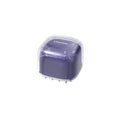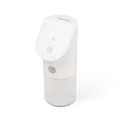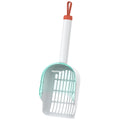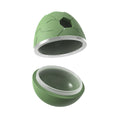As pet owners, we all want to keep our furry friends safe and healthy. While we do our best to prevent accidents and injuries, emergencies can still happen. For this reason, it's crucial that we are equipped with the knowledge and skills to administer basic first aid to our pets in the event of an unforeseen crisis. In the following, we'll cover five essential things you need to know about pet first aid.
1. Know Your Pet's Vital Signs
One of the most important things you can do to prepare for a pet emergency is to know your pet's vital signs. This includes their heart rate, respiration rate, and body temperature. Knowing these numbers can help you quickly identify when something is wrong with your pet.
Normal ranges for vital signs vary depending on the species, breed, and age of your pet. For example, a normal heart rate for a dog can range from 60 to 140 beats per minute, while a cat's heart rate can range from 120 to 220 beats per minute. A dog's respiration rate can range from 10 to 30 breaths per minute, while a cat's can range from 20 to 30 breaths per minute. Normal body temperature for both dogs and cats is between 99.5 and 102.5 degrees Fahrenheit.
To take your pet's vital signs at home, you'll need a stopwatch or clock with a second hand, a thermometer, and a stethoscope. For heart rate, place your hand on your pet's chest behind the left elbow and count the number of beats you feel in 15 seconds, then multiply by four. For respiration rate, watch your pet's chest or abdomen for 15 seconds and count the number of breaths, then multiply by four. To take your pet's temperature, use a digital thermometer designed for pets and insert it into your pet's rectum.

2. Create a Pet First Aid Kit
Another essential step in preparing for pet emergencies is to create a pet first aid kit. This kit should contain all the items you'll need to administer basic first aid to your pet in case of an emergency. Some essential items to include in your kit are:
- Bandages
- Gauze pads
- Adhesive tape
- Antiseptic wipes
- Tweezers
- Scissors
- Digital thermometer
- Emergency blanket
- Eyewash solution
- Hydrogen peroxide (for inducing vomiting if instructed by a veterinarian)
When creating your first aid kit, make sure to store it in a dry, cool place that's easily accessible in case of an emergency. It's also a good idea to periodically check your kit and replace any expired items.
3. Common Pet First Aid Emergencies
While we hope we'll never have to use our pet first aid kit, it's important to be prepared for emergencies. Here are some common pet emergencies and how to handle them:
- Choking: If your pet is choking, try to remove the object causing the obstruction using tweezers or your fingers. If this doesn't work, perform the Heimlich maneuver by placing your hands just behind your pet's last rib and giving a quick upward thrust. Check your pet's mouth to make sure the object has been removed.
- Poisoning: If you suspect your pet has been poisoned, call your veterinarian or a pet poison control hotline immediately. Do not induce vomiting unless instructed to do so by a veterinarian or poison control expert.
- Heatstroke: If your pet is showing signs of heatstroke (excessive panting, drooling, vomiting, collapse), move them to a cool, shady area and wet their fur with cool (not cold) water. Use a fan to help cool them down and monitor their temperature. It's important to get your pet to a veterinarian as soon as possible, as heatstroke can cause serious damage to your pet's internal organs.
- Wounds: If your pet has a wound, clean the area with an antiseptic solution and cover it with a sterile gauze pad and adhesive tape. For larger wounds or wounds that won't stop bleeding, apply pressure with a clean cloth and seek veterinary attention.
- Seizures: If your pet is having a seizure, clear the area around them and make sure they don't injure themselves. Do not try to restrain your pet or put anything in its mouth. Time the length of the seizure and seek veterinary attention.
4. Know When to Seek Professional Help
While knowing basic first aid can help you stabilize your pet in an emergency, it's important to recognize when your pet needs professional medical attention. Signs that your pet needs immediate veterinary care include:
- Uncontrolled bleeding
- Difficulty breathing
- Seizures lasting longer than five minutes
- Unconsciousness
- Inability to stand or walk
- Severe pain
- Suspected broken bones
- Suspected poisoning
If you suspect your pet is experiencing any of these symptoms, transport them to a veterinarian immediately. If possible, call ahead to let the clinic know you're coming and provide any relevant information about your pet's condition.

5. Preventing Pet Emergencies
Preventing pet emergencies is crucial to ensuring your pet's safety and well-being. By taking a few simple steps, you can reduce the risk of accidents and injuries. Here are some tips for pet-proofing your home and yard:
- Store hazardous items out of reach: Keep cleaning supplies, medications, and other toxic substances in cabinets or drawers that your pet cannot access. Make sure garbage cans are securely closed and pet-proofed.
- Remove dangerous items: Keep small objects like batteries, coins, and rubber bands out of reach as these can be swallowed by pets and cause serious harm. Keep sharp objects like knives, scissors, and needles away from pets.
- Secure your home: Make sure your pet cannot escape from your home or yard by securing windows, doors, and fences. This is especially important if you have a pet that likes to run away or explore.
- Keep your pet supervised: Don't leave your pet alone for long periods of time, especially if they are young, old, or have health issues. Supervision can help prevent accidents like falling, getting stuck, or eating something harmful.
- Provide appropriate toys: Offer your pet toys that are appropriate for their size, age, and breed. Avoid toys that can be easily chewed and swallowed or those that have small parts that can be broken off.
Conclusion
Pet first aid is an essential skill that every pet owner should learn. By knowing your pet's vital signs, creating a pet first aid kit, and being prepared for emergencies, you can help save your pet's life. Remember, prevention is key to reducing the likelihood of pet emergencies. Take steps to pet-proof your home and yard, and always be aware of your pet's surroundings. By taking these steps, you can help ensure your pet lives a long, happy, and healthy life. Don't forget to stay informed about pet health and wellness by seeking regular veterinary checkups and staying up to date with the latest pet care information.
































Leave a comment
All comments are moderated before being published.
This site is protected by hCaptcha and the hCaptcha Privacy Policy and Terms of Service apply.